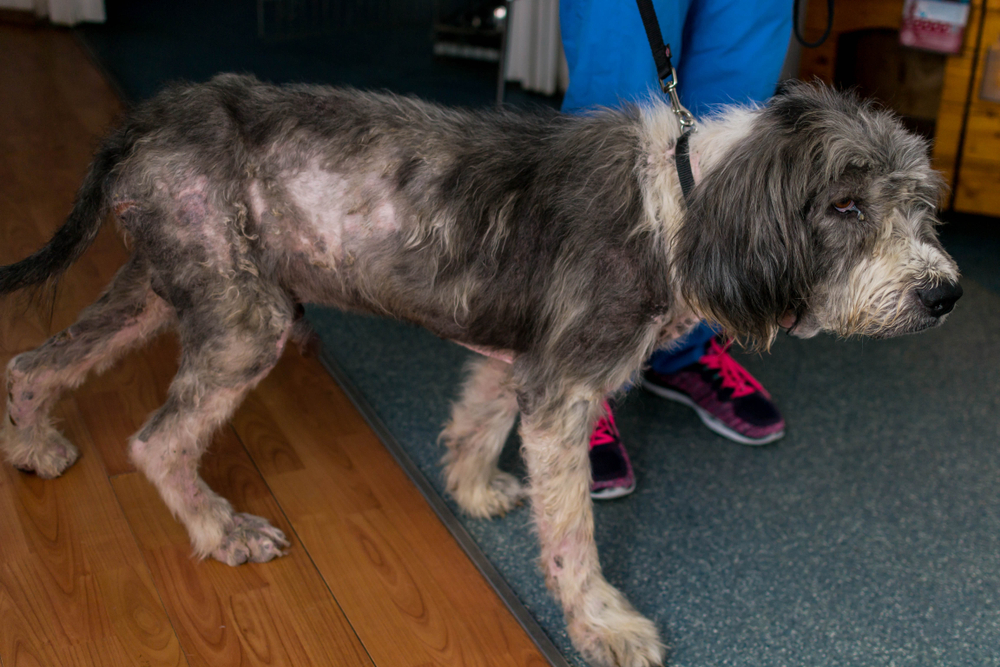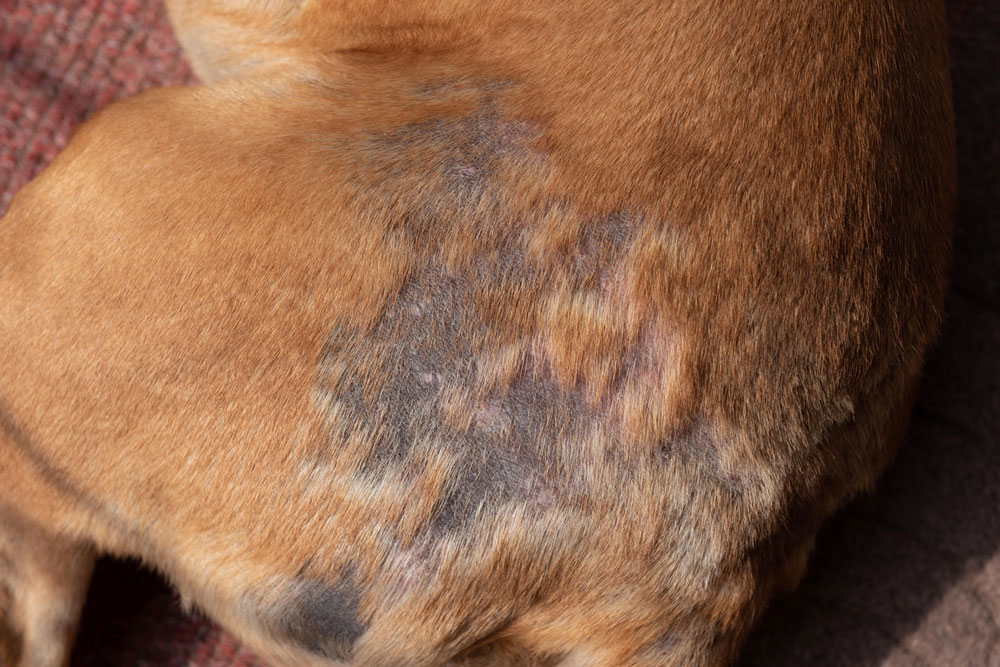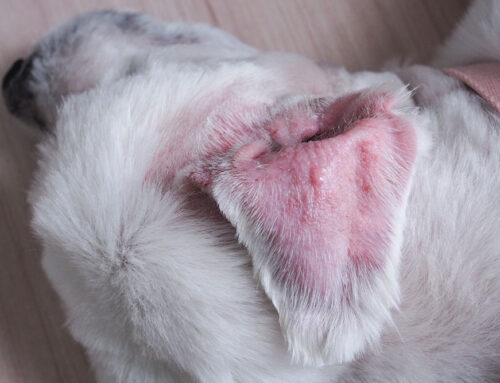Is That Normal Shedding or Something More? Understanding Hair Loss in Pets
Finding clumps of fur on the couch or noticing bald patches on a pet’s coat can catch any pet owner off guard. At Valley Center Veterinary Clinic in Valley Center, California, hair loss in dogs and cats is taken seriously because it can reveal much more than a grooming issue.
While seasonal shedding is normal, unexplained or excessive hair loss, also known as alopecia, often signals an underlying health concern that needs attention. This guide explores the common reasons behind hair loss in pets, what to watch for, and how a veterinarian can help restore a pet’s coat- and comfort- through proper diagnosis and treatment.
What Is Alopecia in Dogs and Cats?
Alopecia means partial or complete hair loss and differs from the usual shedding that dogs and cats experience. Seasonal shedding is predictable and healthy hair grows back. Alopecia means the hair falls out faster than it grows back, often leaving noticeable thin or bald spots..
Common Causes of Hair Loss in Pets
Hair loss rarely happens on its own. It usually points to an underlying issue that affects skin, hormones, or behavior.
1. Parasites
Fleas, mites, and lice irritate the skin, causing intense scratching that leads to bald patches. Flea allergy dermatitis is especially common and can affect cats and dogs alike. Learn more about flea allergy in cats and how quick treatment can ease discomfort.
2. Allergies
Allergies can be environmental (dust, pollen, mold), food-related, or triggered by flea bites. Allergic reactions cause itching, inflammation, and hair loss. See dog allergy symptoms and treatments to learn more.
3. Infections
Bacterial and fungal infections, like ringworm, often appear as bald spots with irritated and scaly skin. Ringworm is contagious to other pets and people, so early detection is important.
4. Hormonal Imbalances
Endocrine conditions like hypothyroidism and Cushing’s disease disrupt normal hair growth. These conditions often cause symmetrical hair loss and thinning skin. Exposure to hormone creams, like those that are used for hormone replacement therapy, can cause hair loss just by touching your pet.
5. Nutritional Deficiencies
Low-quality diets or imbalanced nutrition can weaken hair follicles, leading to dull, brittle fur that falls out. The importance of blood work for your dog can’t be overstated when searching for metabolic causes.
6. Behavioral Overgrooming
Stress and anxiety can lead pets to lick or chew obsessively, wearing down the coat. This is called psychogenic alopecia and can be challenging to manage without help.
7. Genetic Conditions
Some breeds are prone to hereditary forms of hair loss, such as color dilution alopecia or canine flank alopecia. These genetic factors can be managed with the right approach. Learn more about color dilution alopecia and canine f lank alopecia.
Why Hair Loss Should Never Be Ignored
Hair loss is more than a cosmetic concern. It often means a pet is uncomfortable. Persistent itching can lead to open sores, secondary infections, and even behavioral changes. Some causes, like ringworm, can also spread to people or other animals. Left untreated, hair loss can signal that an underlying disease is progressing. Parasites multiply, infections spread, and chronic conditions like hypothyroidism can worsen, impacting overall health.
Signs It’s More Than Just Shedding
Besides visible bald spots, owners should look for:
- Red, inflamed, or flaky skin
- Scabs, pustules, or crusts
- Dull, thinning, or brittle fur
- Excessive licking or scratching
- Restlessness or irritability
Any combination of these symptoms warrants a veterinary visit.
How Hair Loss Is Diagnosed
A clear diagnosis guides the right treatment. At Valley Center Veterinary Clinic, diagnosis begins with a thorough exam and may include:
- Skin Scrapings: Check for mites or parasites.
- Cytology: To look for signs of bacteria and fungal organisms.
- Fungal Cultures: Identify ringworm and other infections.
- Blood Work: Evaluate hormone levels and overall health.
- Allergy Testing: Detect food or environmental triggers.
- Skin Biopsies: Examine deeper layers if needed.
Learn more about the diagnostic services available to get answers quickly.
How Hair Loss Is Treated
Treatment depends on what’s causing the problem. This could include:
- Prescription flea and parasite preventives to stop itching at the source. Year-round parasite control helps prevent recurring problems; see why year-round prevention matters.
- Medicated shampoos for bacterial or fungal infections.
- Allergy management plans with diet adjustments or medications.
- Hormonal therapies for conditions like hypothyroidism.
- Stress-reducing strategies for pets who overgroom.
- Nutritional improvements for a healthier coat.
- Supportive treatments like cold laser therapy to reduce inflammation and speed healing.
Prevention Tips: Protect the Coat Before Problems Start
A few proactive steps can help keep a pet’s skin and coat healthy:
- Use year-round parasite preventives.
- Feed a high-quality, balanced diet.
- Groom regularly to spot early signs of trouble. Read why regular grooming is so valuable.
- Reduce stress with safe, calm spaces at home.
- Schedule routine wellness exams. Regular checkups and dental care also play a role in overall health.

Preparing for the Vet Visit: What Helps
Being prepared makes each visit more productive:
Bring:
- A timeline of hair loss progression.
- A list of foods, treats, and supplements.
- Notes on any behavior or environment changes.
- Photos of bald spots or areas that come and go.
Ask:
- What is the likely cause of the hair loss?
- Which tests are needed?
- How long will it take to see new hair growth?
- Are there steps to manage this at home?
FAQs About Hair Loss in Pets
Is hair loss contagious? Some causes, like ringworm and mange, can spread to other pets and people.
Will the hair grow back? In most cases, yes- once the root cause is resolved.
Can I try over-the-counter treatments first? It’s safest to check with a veterinarian. Some home remedies may mask symptoms or worsen certain conditions.
Is shedding normal? Yes. But excessive shedding that leaves bald spots is not.
Partnering for Healthy Skin and a Full Coat
When a pet loses hair, it’s more than just an inconvenience. It is a signal that something needs attention. Valley Center Veterinary Clinic is ready to help identify the cause, treat the problem at its source, and bring relief and comfort back to your pet’s life. Book an appointment or contact us today to start the journey to a healthier coat and a happier pet.







Leave A Comment